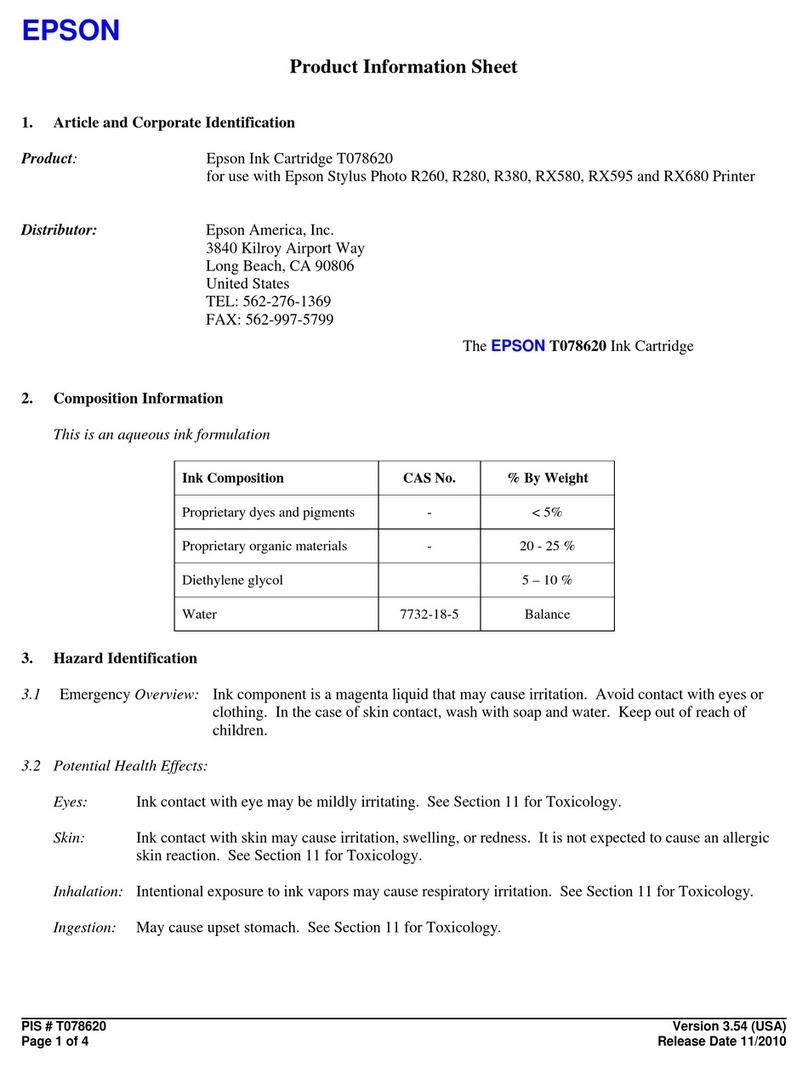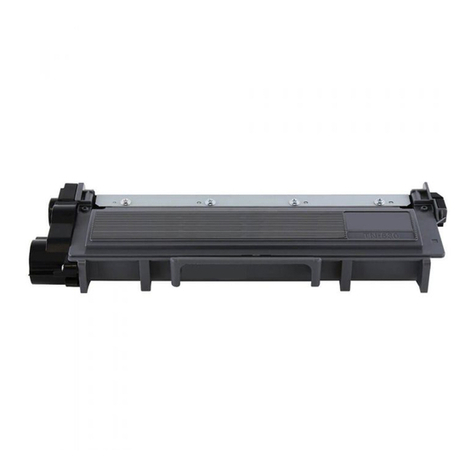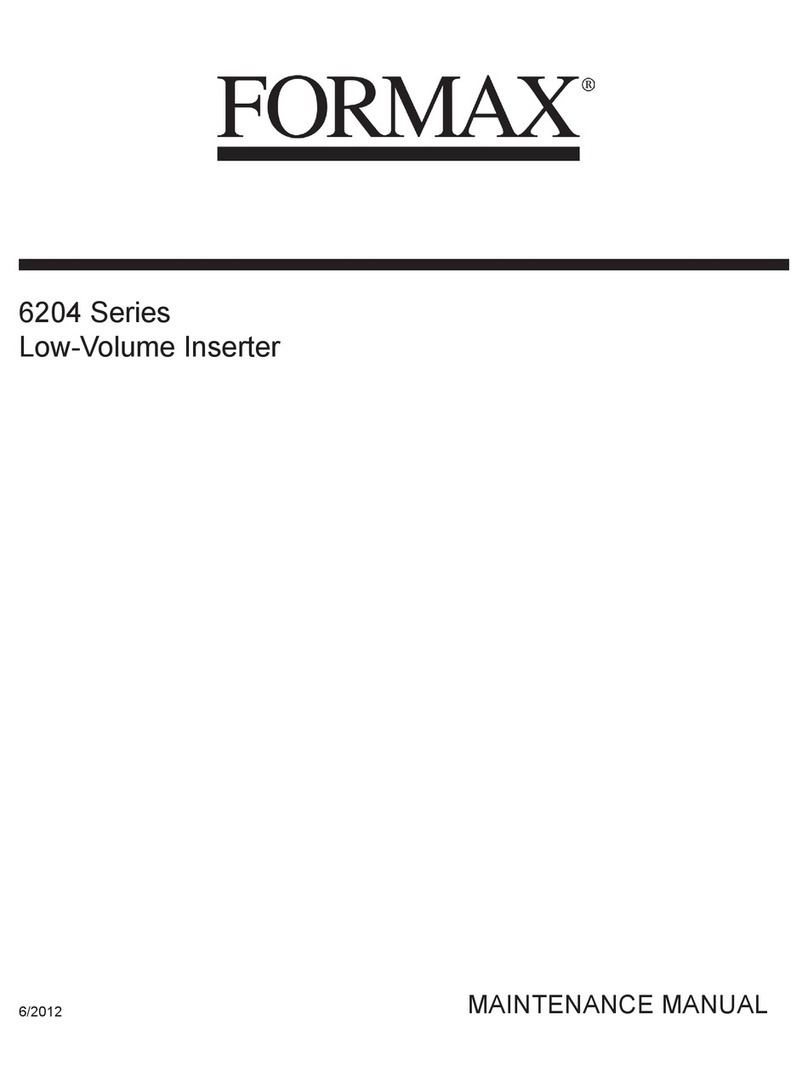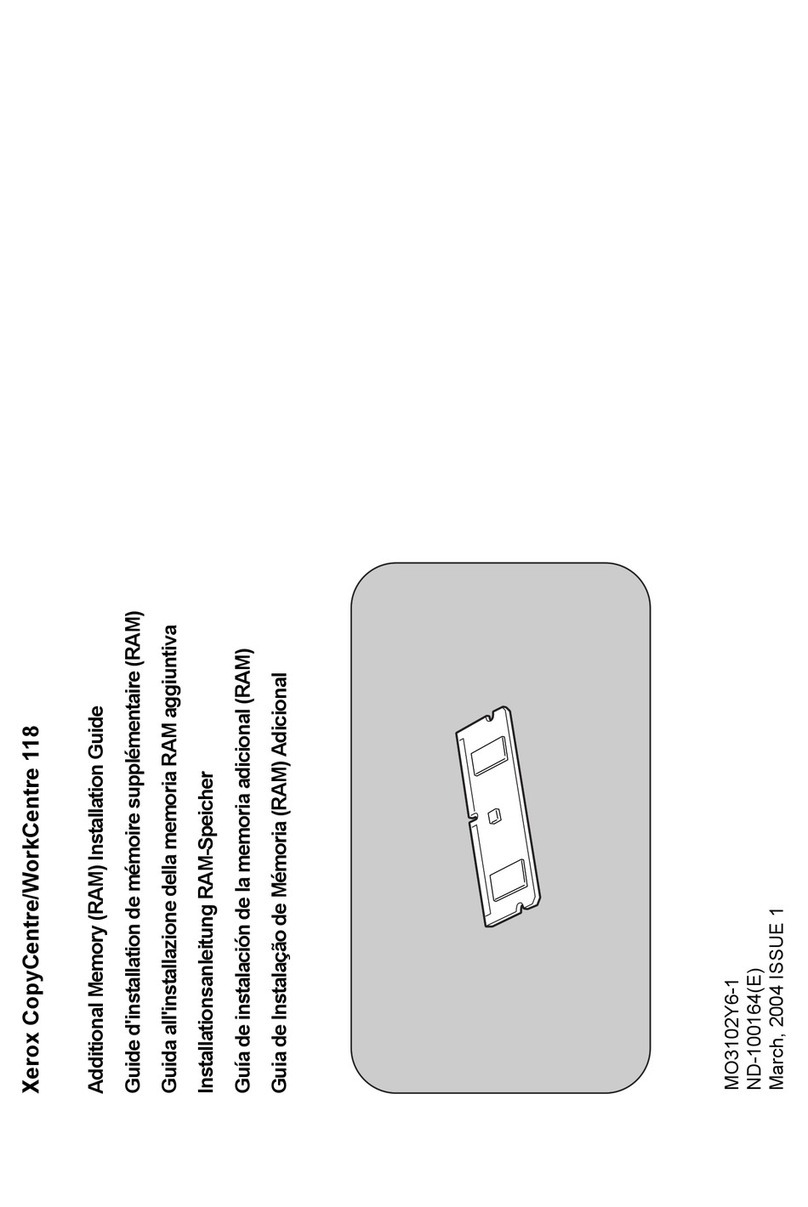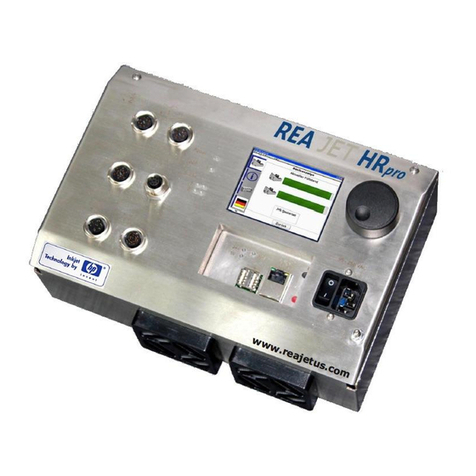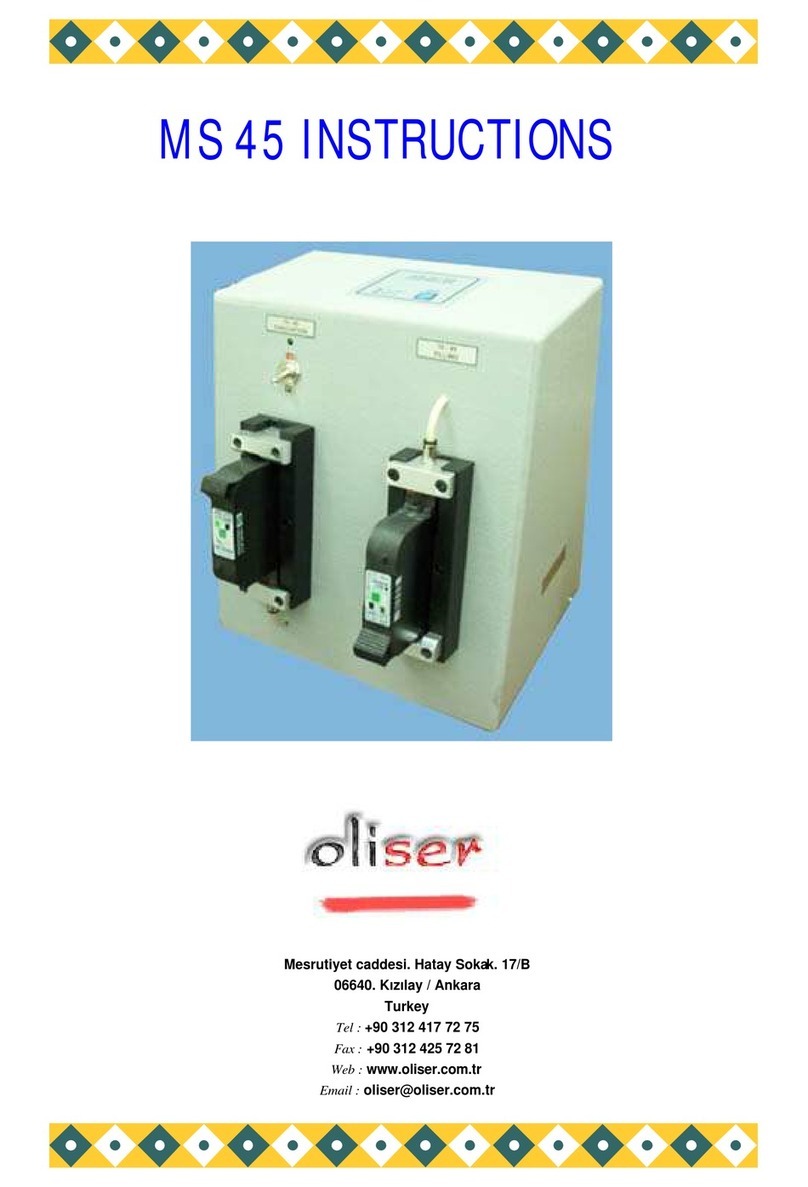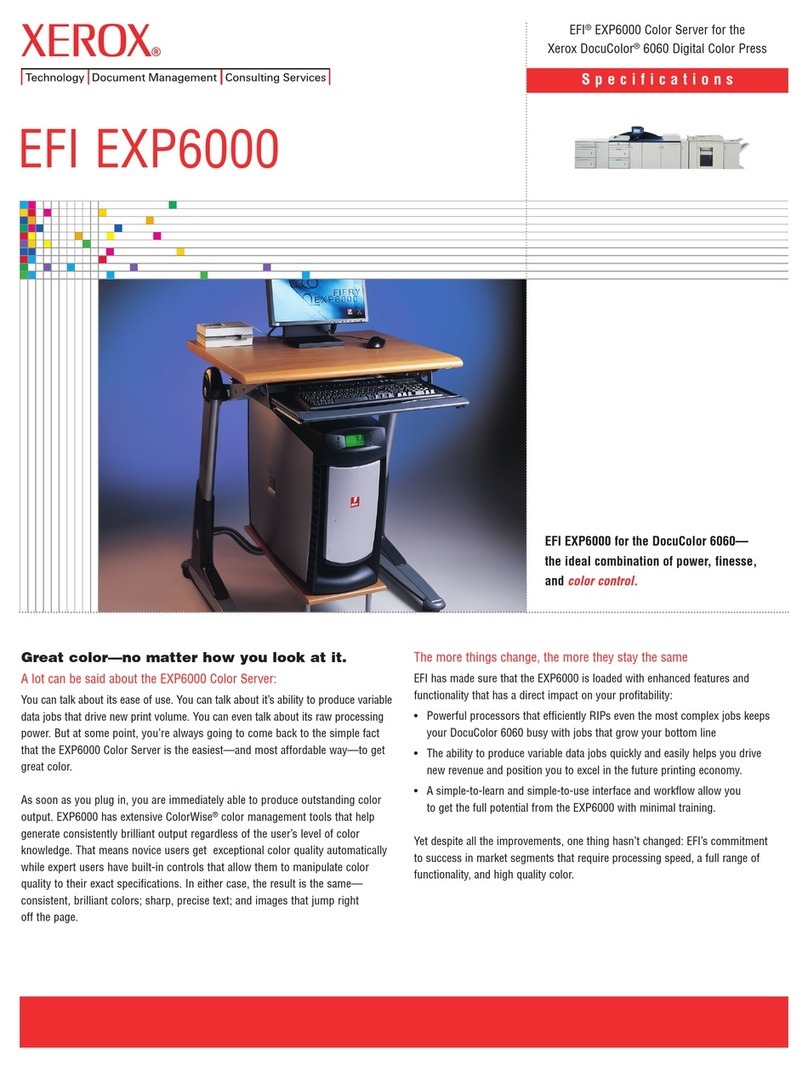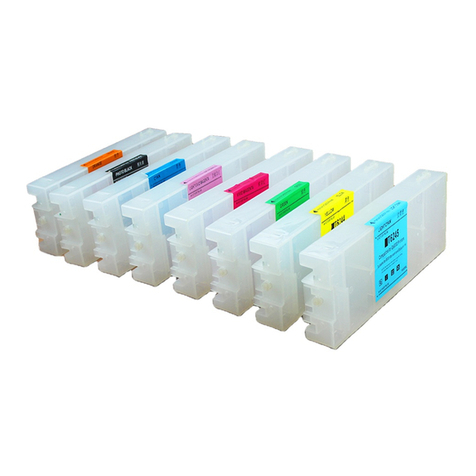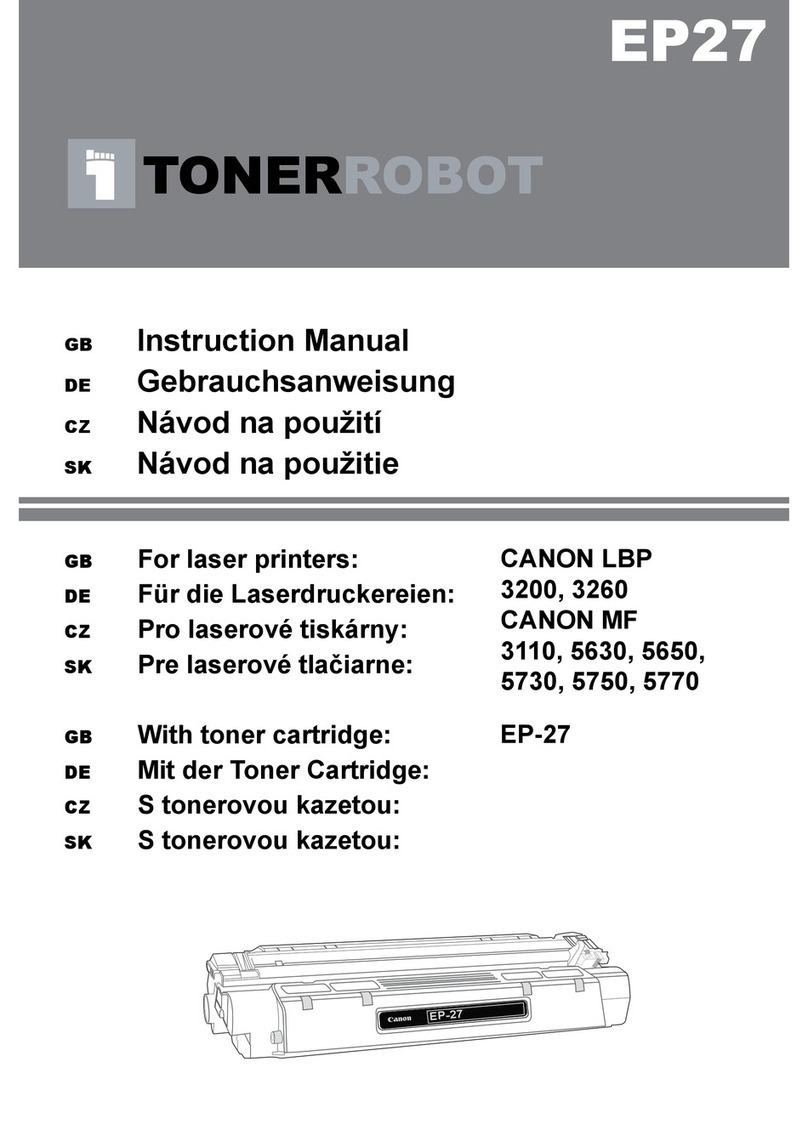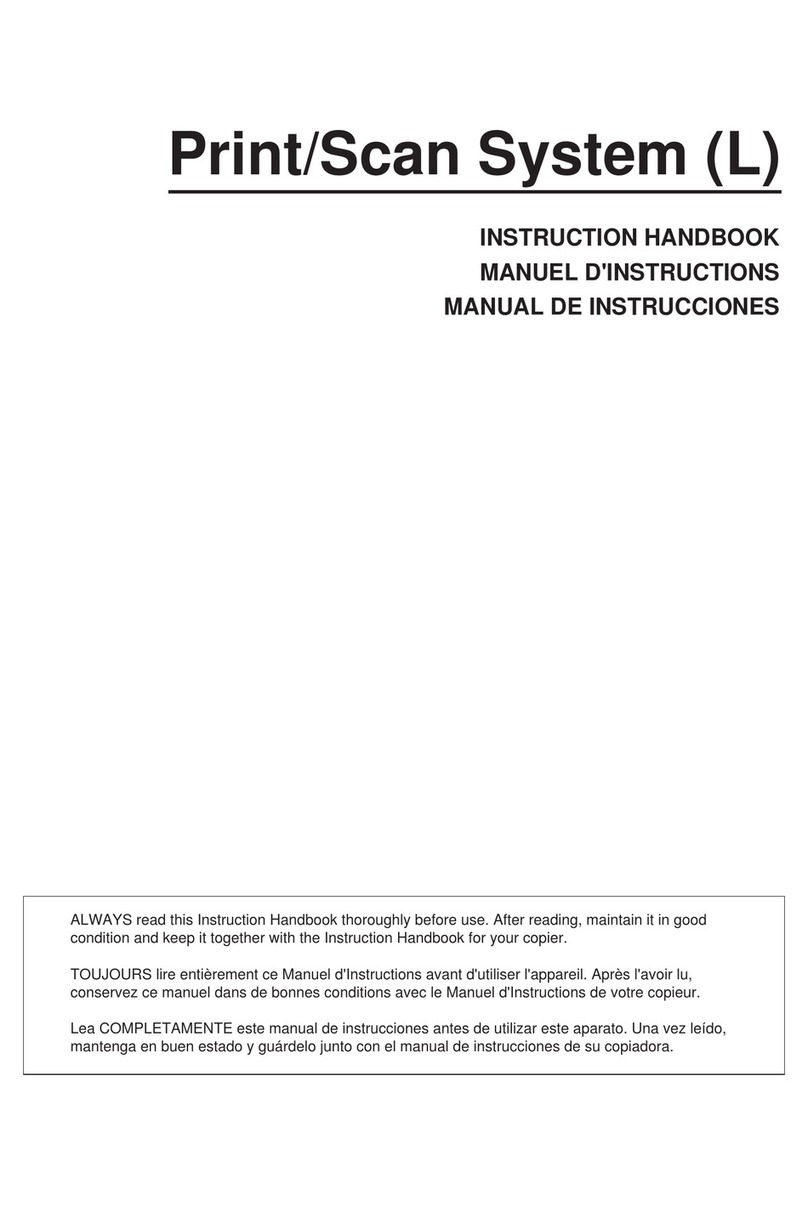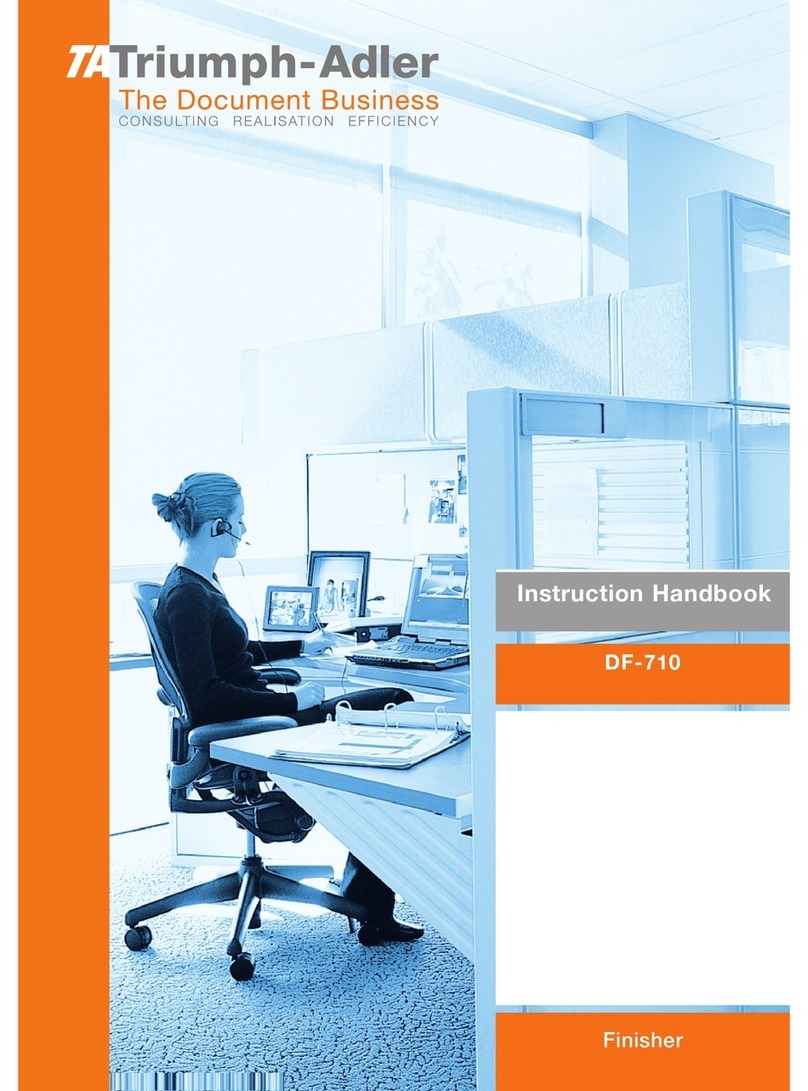Watkiss Vario User manual

Operating Manual Issue 3


CONTENTS
Welcome..............................................1
Quick Start ..........................................5
Control Panel ......................................9
Friction Bins .....................................27
SlimVAC Bins ...................................33
Suction Bins .....................................41
Bench Base.......................................49
Oscillating Bench Base ...................55
Floor Base.........................................59
Joggers .............................................65
Rear Corner Stapler .........................69
Maintenance......................................73
Appendices
Problem Solving ................................... 79
Advanced Functions ............................. 91
Specifications ....................................... 93
Declaration of Conformity ..................... 97
Index..................................................99
Issue 3 - Mar 2001 - Part No. 960-341
Issue 2 - Dec 1997 - Part No. 960-321
Issue 1 - Apr 1996 - Part No. 960-301


1
Welcome
Congratulations, you have just purchased the very finest
of collators, the Watkiss Vario. Your Vario has been
designed to make collating efficient, productive and
above all, easy.
ABOUT YOUR
MANUAL This operating manual (Issue 3) covers machines fitted
with a GUI (Graphical User Interface) colour touch-screen
control panel (see below). For machines fitted with earlier
control panels please refer to Issue 1 and 2.
The manual has a 'Quick Start' section to get you up and
running quickly. It is then followed by more detail on each
of the modules that make up your machine, and by
problem solving charts and additional notes.
SAFETY FIRST Your Vario has been designed with safety as a key feature.
However, as with all electrical equipment, when removing
any covers or changing fuses always first discon-
nect the machine from the mains electricity
supply by switching off and unplugging the machine.
Rear Guard
The rear guard of the collator must be fitted for the
machine to run. A safety switch prevents machine oper-
ation when the guard is removed. When fitting the guard,
ensure that the bar on the top bracket locates correctly
on the hooks under the drive unit. Also ensure the guard’s
bottom bracket locates on the lower conveyor shaft.
GUI Touch-screen Control Panel

2
Emergency Stop
The emergency stop button should only be used when
an immediate stop of the machine is required. Under
normal circumstances the machine should be stopped
by touching the stop button on the control panel. If the
emergency stop button is used, the collator will not restart
until the button has been released by turning clockwise.
INSTALLATION The installation of your Vario requires specialist knowl-
edge and should therefore only be carried out by a
Watkiss approved engineer.
MAINS INPUT The Mains input for the Vario is on the rear of the drive
unit. The collator must be plugged into a mains supply of
the correct voltage. Two fuses are fitted next to the Mains
input. If either of the fuses fails the collator will not power
up (see p.85 for details about changing fuses).
MAINS ON/OFF
SWITCH The mains On/Off switch should be used to turn the
collator on and off when required. When the collator is
Mains ON/OFF Switch
Emergency Stop
Mains Input and Fuses

3
switched off it retains the control panel settings in
memory.
GETTING HELP We are confident that your Vario will give many years of
trouble-free production. If you have any queries or prob-
lems, in the first instance please refer to the problem
solving section in this book. Should you require further
assistance, the Watkiss Service Department (UK) or your
local Watkiss supplier will be happy to help.

4
THIS PAGE IS
INTENTIONALLY
BLANK

5
1Quick Start
This section is intended only as a brief operating guide.
Detailed operating procedures are included in subse-
quent chapters.
Plug the collator into a mains supply of the correct voltage.
Switch on the mains ON/OFF switch.
OPERATING THE
TOUCH SCREEN In normal use, the touch-screen can be operated by
finger-tip. It is not necessary to touch the screen with any
other implement. However, the screen can be operated
with any blunt instrument, such as a palm top ‘wand’or
the blunt end of a pen.
Do not use excessive force: a light touch is all that is
needed.
The Vario is controlled by touching buttons on the control
panel. Buttons that perform related functions are grouped
together in ’windows’. Each window is selected by touch-
ing the relevant tab at the bottom of the control panel.
Caution
Operating the touch screen with a sharp object, or with
excessive force, will damage the screen.

6
There are also six ‘control’buttons along the top of the
screen. To display help text about any of the machine’s
functions, touchHELPandthentouch therequired button.
Tip
Load the Default Template to return the control panel to its default factory settings:
•Touch End Job
•Touch Load & Save
•Select the Default Template from the list of jobs
•Touch Load
•In the window that appears, touch Yes to confirm that you wish to load the Default
Template
Load & Save
Advanced
Basic
Feed
Batch
Finishing
Main Window Tabs on the Control Panel
Start/Stop
End Job
Inch/Pause
Test Set
Help
Menu
Control Buttons
Each window contains a
group of related buttons
Touch the relevant tab to
display each window

7
LOADING THE BINS
WITH PAPER Remove any unwanted paper from the bins and press
INCH to check that there is no paper left in the conveyor
from the previous job. Touch END JOB to tell the Vario that
the previous job has finished.
The job should be organised either with the sheets face
uppermost, and the first page in the top bin or face down
with the first page in the bottom bin. The bins will auto-
matically switch on when they are loaded with paper.
Friction Bins
Take a stack of paper and slide it into the bin between
the sliding sidelays. Push in the sidelays to centralise the
paper in the bin, they should hold the paper securely.
SlimVAC Bins
Take a stack of paper and slide it into the bin between
the sliding sidelays. Push in the sidelays to centralise the
paper in the bin, they should hold the paper securely.
Position the rubber endlay on the tray at the end of the
paper stack. The endlay should be underneath and just
clear of the edge of the paper (by about 1mm, 1/16").
Suction Bins
Switch off any suckers that would be off the edge of the
paper by turning the tap to the left.
Normally the trays are all in the up position, in order to
load the bins they must first be lowered. Starting with the
bottom bin (bin 1), press the grey bin lowering button and
then load the bin, lower bin 2 and load it, lower bin 3 and
load it etc.
Slide the stock into the bin, centralising it between the
two locating pins. Ensure the stack is loaded neatly and
square, and then place the magnetic sidelays on all three
sides.
ADJUSTING THE
MACHINE Friction Bins
•Initially set the separation pressure lever (left) to its mid-
position.
•Set the tray pressure to minimum by pushing down on
the lever (right) and releasing it to its innermost position.
If loading large sheets it should be one notch out.

8
SlimVAC Bins
•Initially set the tray height lever to its mid position
•Angle the suction feeder down
•Set the corrugation adjustment (on the feeder) to the
mid-position
Suction Bins
•Initially set the edge flick control to the mid position.
Stacker
Adjust the stacker for paper size.
STARTING THE JOB Press to run the test set.
When the test set is complete, press again to run the
job.
Once the machine is running, adjustments may be nec-
essary depending upon the stock in use. Full details for
each type of feed bin are found in the appropriate chapter.
The machine can be stopped at any time by pressing .

9
2Control Panel
Your Vario will be fitted with a GUI (Graphical User
Interface) control panel. The control panel has an 8.2"
colour touch-screen, which offers a user-friendly interface
for operators.
There are start and stop buttons mounted on the control
panel’s frame, these buttons are also repeated on the
touch-screen.
The touch-screen has a ’power save’function: if it is not
used for a period of time, it automatically dims. After an
extended period, it switches off. In either case, touch the
screen to return it to normal.
THE WINDOW
SYSTEM The Vario is controlled by touching buttons on the control
panel. The buttons are divided into groups that perform
related functions. Each group of buttons has its own
’window’which is selected by touching the relevant tab:
•Load & Save
•Basic
•Advanced
•Feed
•Batch
•Finishing (this is only displayed if a booklet maker is
fitted to the Vario)
Stop ButtonStart Button
Touch-screen
GUI Control Panel
Tip
The touch-screen takes two or three minutes to reach full brightness when it is
switched on.

10
‘CONTROL’ BUTTONS There are six main ’control’buttons listed across the top
of the screen:
START/STOP The button is used to start the machine. When the
machine is running, this button changes to which stops
the machine. These are duplicated by the start/stop
buttons above the touch screen.
INCH Touch and hold INCH to turn the conveyor. The conveyor
will stop when INCH is released. This is used for clearing
any sets remaining in the conveyor after a jam, etc.
When the machine is running, this button changes to
PAUSE. Touch PAUSE to pause the feed for approximately
Load & Save
Advanced
Basic
Feed
Batch
Finishing
Main Window Tabs on the Control Panel
Start/Stop
End Job
Inch/Pause
Test Set
Help
Menu
Control Buttons
Touch the relevant tab to
display each window
Each window contains a
group of related buttons

11
5 seconds, the conveyor continues to run. The pause time
can be altered on the Machine Options page.
END JOB Touch END JOB when you want to set the machine up for
a new job, or alter an existing job. When a job is loaded,
some of the machine settings cannot be changed, to
prevent accidental changes. END JOB unlocks these
settings.
This only affects settings that change the integrity of the
job, e.g. the number of sheets in a set, or the number of
sets in a batch.
TEST SET When the test set icon is highlighted, the collator is ready
to run a test set. The Vario uses the test set to calibrate
the system according to the stock in each bin. The test
set is not counted by the counter (except when in pre-
number mode). Once the test set is completed and is
accepted by starting the machine, the bins and certain
functions cannot be changed, to prevent errors and
accidental button pushes.
To run a test set:
•Load the collator
•Touch the button
•The collator will feed a single sheet from each bin that
is switched on and loaded
•If an error occurred during the test set, or the bin
loading is changed at this stage, touch to run another
test set
•When the test set icon is grey, the machine is ready to
run. Touch
If either the TEST SET or END JOB button is touched,
another test set will need to be run before the job can be
restarted: the test set icon will be highlighted.
If you are having trouble running a job and false errors
are being reported, it may help to run another test set.
This can be done at any time to recalibrate the detector
system.
HELP Touch HELP and then touch any area of the screen to
display the help text. Use the ’up’and ’down’arrows next
to the text to scroll up or down the screen.

12
Some sections of help text have a ’right’arrow next to
them. This indicates that there is more text available,
explaining a related function in more detail. Touch the
’right’arrow to view this text. A ’left’arrow will then also
appear: touch this to return to the previous text.
When you are viewing text, you can find out about any of
the other tabs that remain on display by touching them.
To exit the help text, touch HELP or OK.
MENU MENU gives access to settings that do not need to be
changed on a day-to-day basis. These settings include:
•Change the display language
•Toggle between metric and imperial measurements
•Adjust the screen contrast
•Adjust the pause duration
There are several access levels: some of the settings can
only be changed by someone who has an appropriate
access code.
MIMIC DIAGRAM The mimic diagram of the Vario shown on screen is
automatically created, based on how many bins are fitted
and what finishing equipment is connected. Various areas
on the outline will be highlighted in different colours,
according to the Vario’s operational status. The feed bin
colours mimic the bin indicator lights:
•Steady green: This bin is selected, and is loaded with
paper
•White: This bin is not selected
•Broken line between bins: These bins are linked
•Flashing green: This bin is selected, but it has run out
of paper
•Steady red: (Vario is in divert mode). This bin has had
a double feed. The machine will continue to run and
the error will be displayed for 6 cycles
•Flashing red: This bin has had a double feed, which
has caused the Vario to stop. The error will be explained
in a pop-up box
•Steady yellow: (Vario is in divert mode). This bin has
had a miss. The machine will continue to run and the
error will be displayed for 6 cycles
•Flashing yellow: This bin has had a miss, which has
caused the Vario to stop. The error will be explained in
a pop-up box

13
Errors in other modules are indicated in red.
CTouching Cresets the set counter to 0.
SPH SPH shows the actual production speed of the Vario, in
sets per hour. The production speed is affected by paper
size, online finishing equipment and the job setup.
Mimic Diagram

14
THE ‘BASIC’WINDOW The BASIC window contains settings that regularly need
to be altered when setting up a new job.
SETS PER HOUR SETS PER HOUR allows the production rate of the Vario
to be set. This is automatically limited according to the
machine configuration.
AUTO: Selecting AUTO allows the Vario to run at its max-
imum production speed according to paper size, online
finishing equipment and the job setup.
SINGLE SET: Normally there will be more than one set in
the conveyor at any one time. Touch SINGLE SET to allow
only one set in the conveyor at a time. This minimises the
correction required should an error occur. The sets per
hour will automatically adjust to achieve this.
AIR BLOW AIR BLOW alters the amount of air available for sheet
separation in the feed bins. As a general rule, the heavier
and larger the sheet, the more air you need. The default
factory setting depends on the type of feed bins (25% for
friction, 40% for SlimVAC).
‘BASIC’ Window.

15
If you are running mixed stocks on friction bins, individual
air taps on each bin allow the air to be independently
controlled.
PRESET PRESET is used if an exact number of sets are required.
Touch PRESET and enter the number of sets required on
the number pad. The counter in the main area of the
screen will turn white.. When the machine is started the
counter will automatically count down to zero and the
collator will then stop.
Touch to restart the machine. The counter will revert
to black and will count up to show how many ’overs’are
produced.
The Preset function is ideal for producing a one-off batch.
If you wish to produce several identical batches, it is
easier to use the Batch function.
PRENUMBER PRENUMBER is intended for use when collating pre-
numbered carbonless sets. Touching PRENUMBER se-
lects Single Set mode, disables the Divert function and
causes the test set to be counted by the counter. It also
prevents the operator from switching linked bins before
one bin has emptied.
It is possible to switch off Single Set mode once Prenum-
ber is selected. This allows the machine to run faster when
using stock that feeds easily.
DIVERT DIVERT causes any faulty sets to be diverted without
stopping the collator (floor standing models only). Faulty
sets are not counted by the counter. The DIVERT com-
mand is not available when in PRENUMBER mode or when
feeding to the rear.
OSCILLATE OSCILLATE offsets the collated sets if an X-Jogger or
Oscillating Bench Base is fitted.

16
THE ‘ADVANCED’
WINDOW The ADVANCED window allows advanced machine set-
tings to be altered. These settings may be altered to
optimise the quality and productivity of a job.
DRIVE SPEED DRIVE SPEED alters the drive speed of the conveyor
rollers and therefore the speed at which the sheets exit
the collator. Certain stocks will stack better if the drive
speed is adjusted to suit. This setting is independent from
the SETS PER HOUR setting. The default factory setting
is 80%.
STAGGER (Two Tower only). When STAGGER is selected, the col-
lated set from Tower B delivers ahead and separately
from that of Tower A. This allows for better jogging of sets
with a lot of sheets. Stagger is only available when feeding
into a jogger.
SHEET OFFSET SHEET OFFSET shales the sheets as they exit. This can
assist the neat stacking of thick sheets or large sets. The
range of offset is +/- 20mm between each sheet and
affects all bins. The default sheet offset is 0: this causes
the sheets in a set to exit the collator with their leading
edges level.
‘ADVANCED’Window.
Other manuals for Vario
3
Table of contents
Popular Printer Accessories manuals by other brands

Star Micronics
Star Micronics TSP800 Series install guide
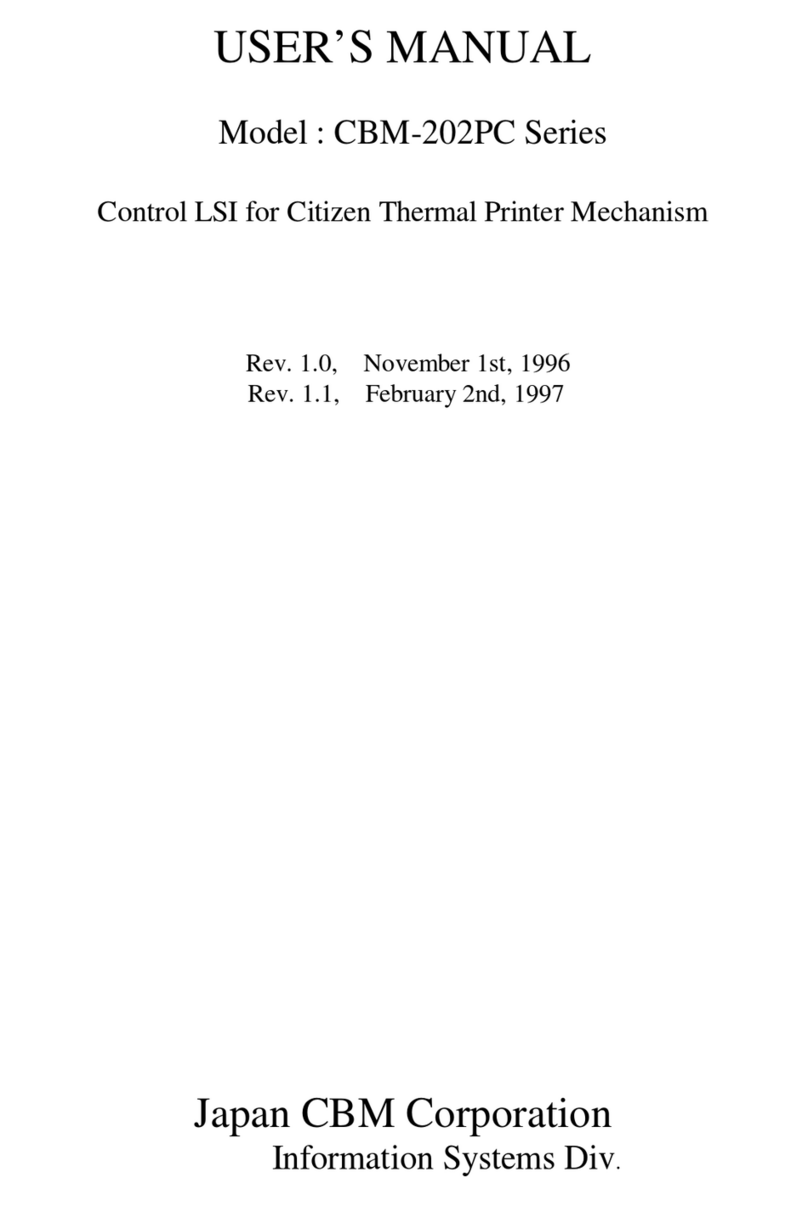
Citizen
Citizen CBM-202PC Series user manual

Canon
Canon Color imageCLASS MF8170c installation instructions
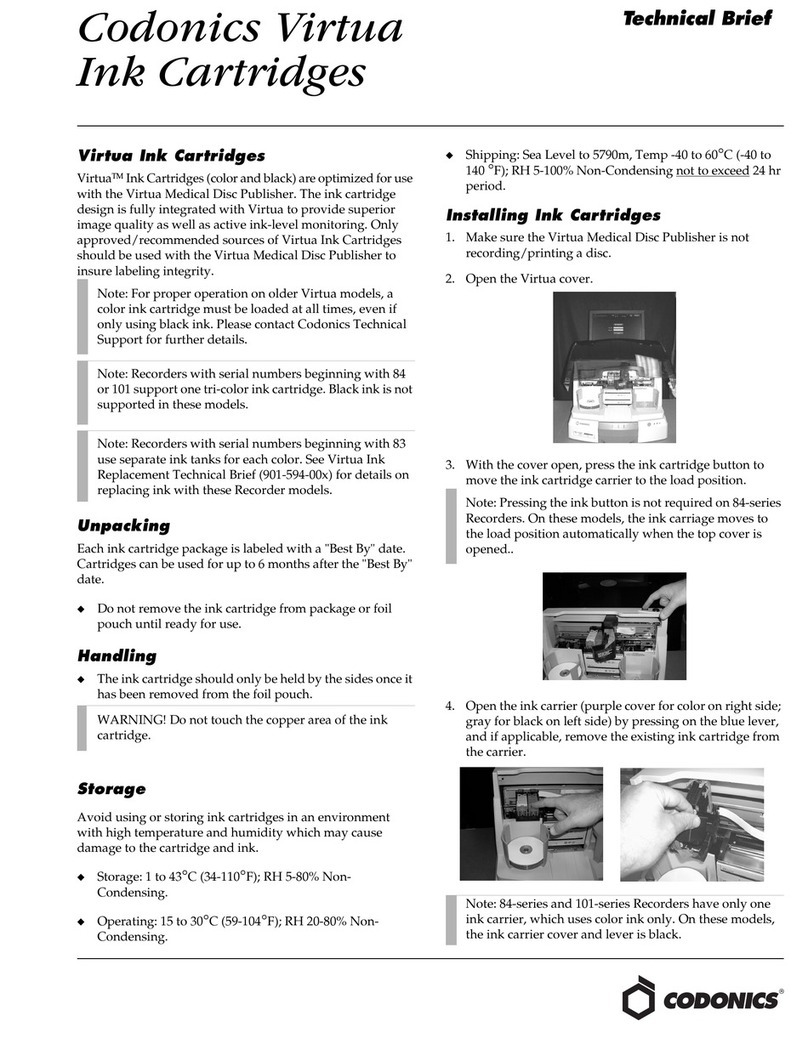
Codonics
Codonics Virtua 1VCX-LR833 Technical brief

Roland
Roland DU2-64 Supplementary manual
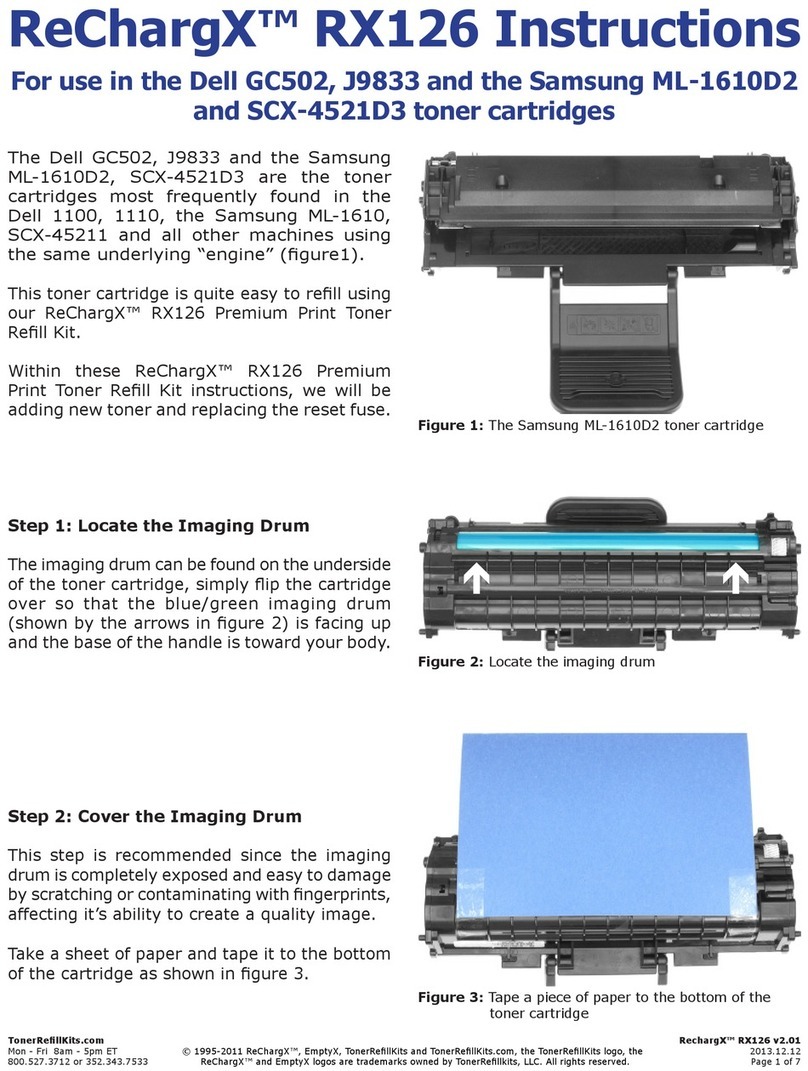
TonerRefillKits
TonerRefillKits ReChargX RX126 instructions
